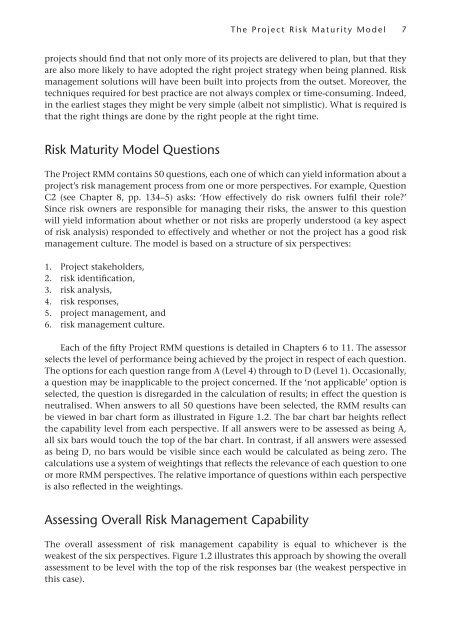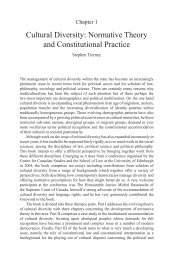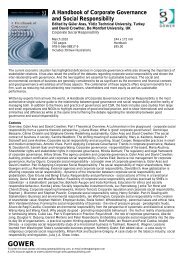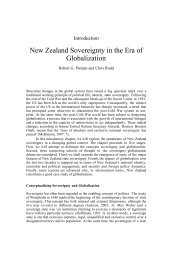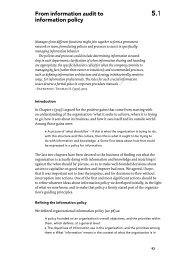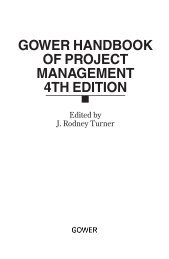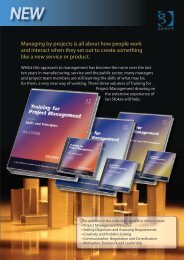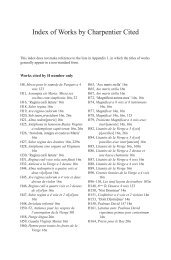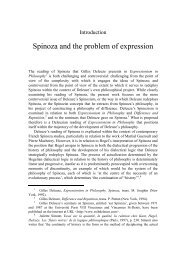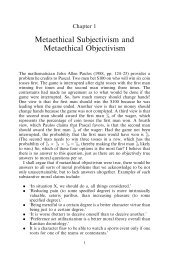The Project Risk Maturity Model
The Project Risk Maturity Model
The Project Risk Maturity Model
You also want an ePaper? Increase the reach of your titles
YUMPU automatically turns print PDFs into web optimized ePapers that Google loves.
T h e P r o j e c t R i s k M a t u r i t y M o d e l<br />
<br />
projects should find that not only more of its projects are delivered to plan, but that they<br />
are also more likely to have adopted the right project strategy when being planned. <strong>Risk</strong><br />
management solutions will have been built into projects from the outset. Moreover, the<br />
techniques required for best practice are not always complex or time-consuming. Indeed,<br />
in the earliest stages they might be very simple (albeit not simplistic). What is required is<br />
that the right things are done by the right people at the right time.<br />
<strong>Risk</strong> <strong>Maturity</strong> <strong>Model</strong> Questions<br />
<strong>The</strong> <strong>Project</strong> RMM contains 50 questions, each one of which can yield information about a<br />
project’s risk management process from one or more perspectives. For example, Question<br />
C2 (see Chapter 8, pp. 134–5) asks: ‘How effectively do risk owners fulfil their role?’<br />
Since risk owners are responsible for managing their risks, the answer to this question<br />
will yield information about whether or not risks are properly understood (a key aspect<br />
of risk analysis) responded to effectively and whether or not the project has a good risk<br />
management culture. <strong>The</strong> model is based on a structure of six perspectives:<br />
1.<br />
2.<br />
3.<br />
4.<br />
5.<br />
6.<br />
<strong>Project</strong> stakeholders,<br />
risk identification,<br />
risk analysis,<br />
risk responses,<br />
project management, and<br />
risk management culture.<br />
Each of the fifty <strong>Project</strong> RMM questions is detailed in Chapters 6 to 11. <strong>The</strong> assessor<br />
selects the level of performance being achieved by the project in respect of each question.<br />
<strong>The</strong> options for each question range from A (Level 4) through to D (Level 1). Occasionally,<br />
a question may be inapplicable to the project concerned. If the ‘not applicable’ option is<br />
selected, the question is disregarded in the calculation of results; in effect the question is<br />
neutralised. When answers to all 50 questions have been selected, the RMM results can<br />
be viewed in bar chart form as illustrated in Figure 1.2. <strong>The</strong> bar chart bar heights reflect<br />
the capability level from each perspective. If all answers were to be assessed as being A,<br />
all six bars would touch the top of the bar chart. In contrast, if all answers were assessed<br />
as being D, no bars would be visible since each would be calculated as being zero. <strong>The</strong><br />
calculations use a system of weightings that reflects the relevance of each question to one<br />
or more RMM perspectives. <strong>The</strong> relative importance of questions within each perspective<br />
is also reflected in the weightings.<br />
Assessing Overall <strong>Risk</strong> Management Capability<br />
<strong>The</strong> overall assessment of risk management capability is equal to whichever is the<br />
weakest of the six perspectives. Figure 1.2 illustrates this approach by showing the overall<br />
assessment to be level with the top of the risk responses bar (the weakest perspective in<br />
this case).


